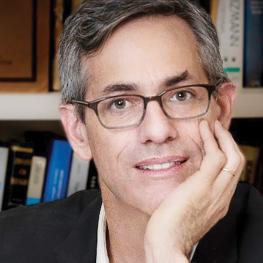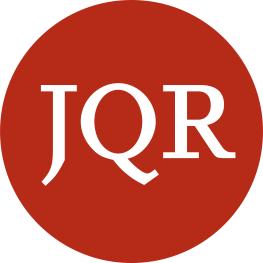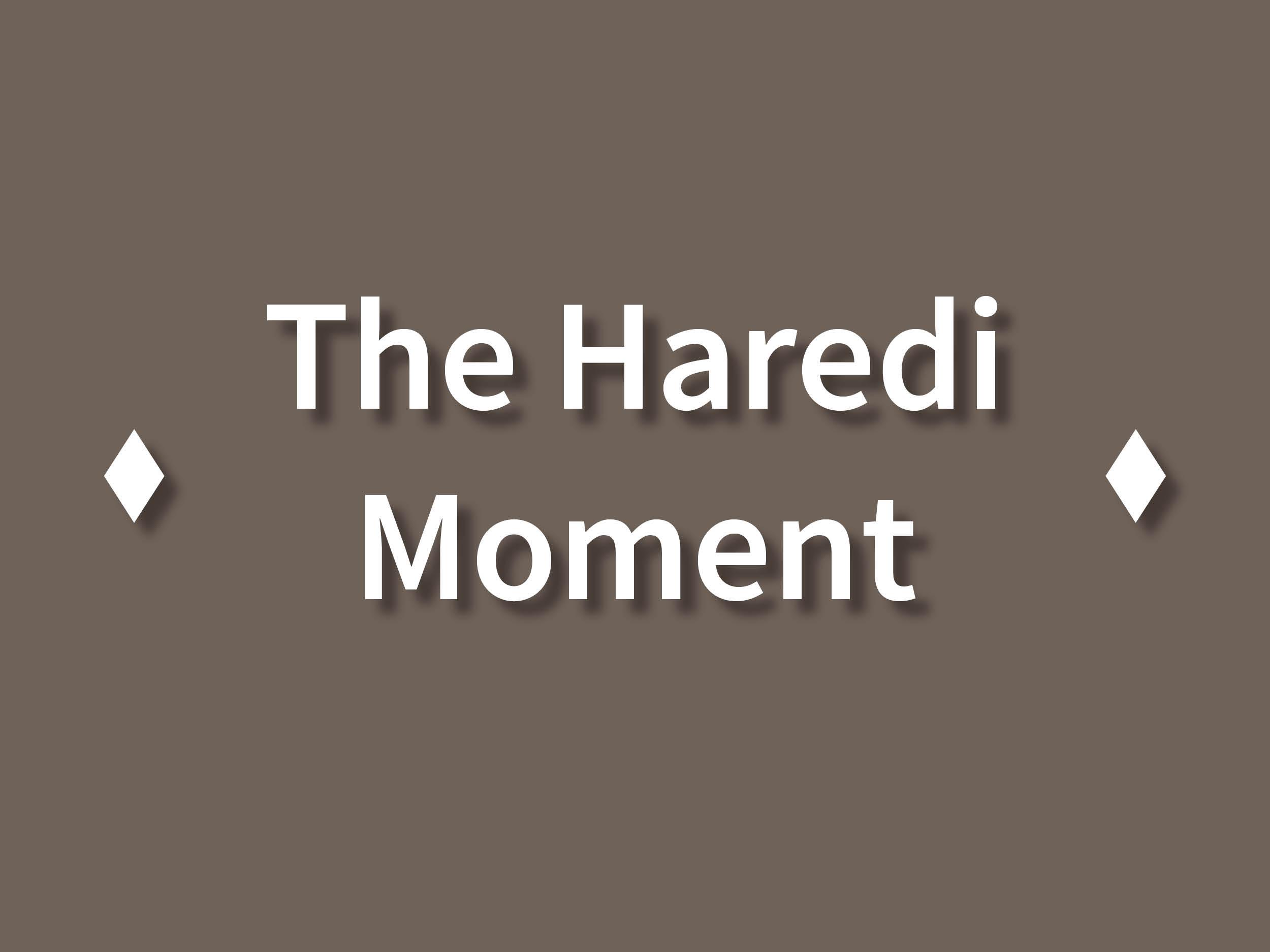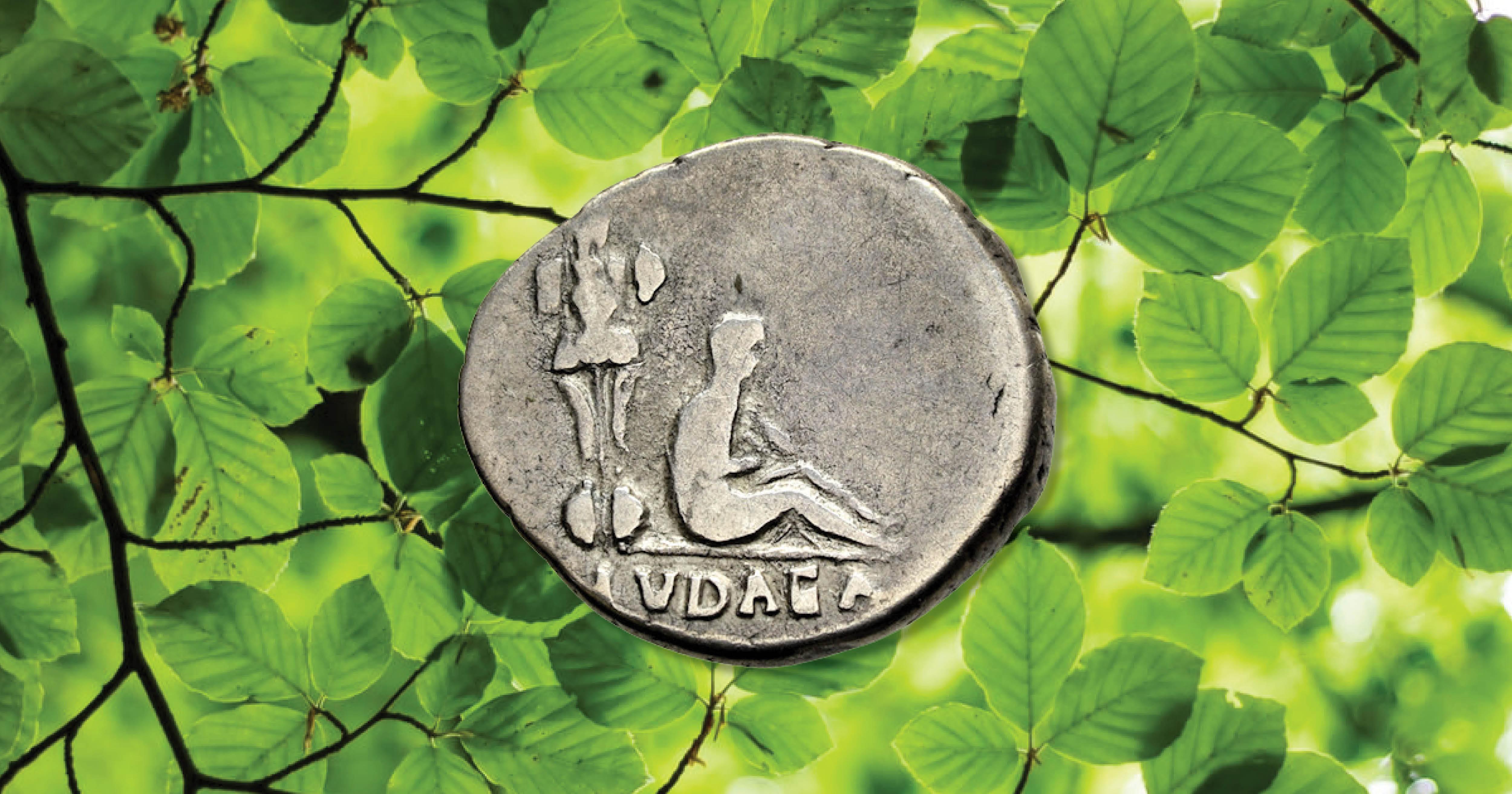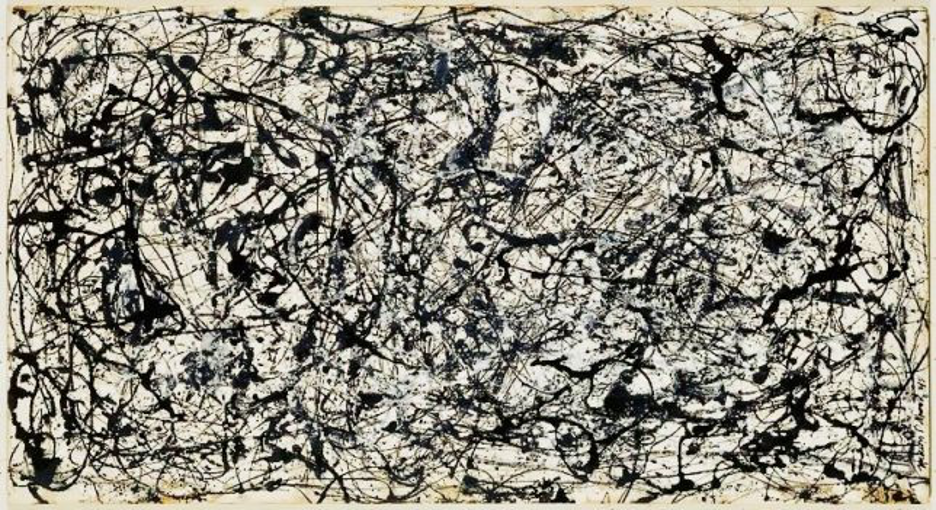The Ironies of History: The Ukraine Crisis through the Lens of Jewish History
In this JQR forum, four historians of Jewish Eastern Europe reflect on Russia’s invasion of Ukraine.
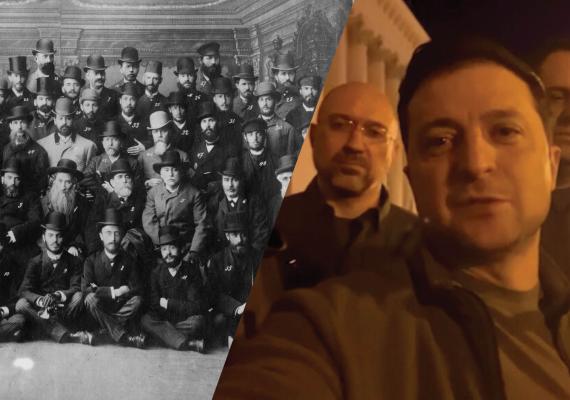
First General Assembly in Odessa of the "Zionist Land Workers in Syria & the Holy Land," 1890 (National Photo Collection of Israel); still from video of Volodymir Zelensky and administration officials in Kyiv, released on Facebook Feb. 25, 2022.
As much of the world expresses sorrow and solidarity with the Ukrainian people—and admiration for its president, Volodymyr Zelensky—the ironies of history abound. To students of Jewish history, it is a source of near incredulity that the same recurrent site of mass violence against Jews—from the Khmielnitsky massacres of the mid-seventeenth century to the brutal killing fields during and after World War I to the bloodlands soiled by Nazi murderers in Operation Barbarossa in 1941—is home to a fledgling democracy and an unlikely and inspiring Jewish president. And yet, Ukraine, like history itself, is multidimensional; it was also home at one time to the world’s largest population of Jews and the place of extraordinary Jewish cultural vitality from Poltava in the east to Lviv in the west, not to mention the jewel of Odessa in the south.
To help us make sense of these ironies, JQR has convened a group of four experts of Eastern European Jewish history to provide insight into Ukraine then and now: Eliyana Adler, Elissa Bemporad, Natan Meir, and Jeffrey Veidlinger. This online forum will not be the last word said on a grave political and moral crisis that is not likely to abate soon. But it is helpful to observe it with a thicker and more complex sense of historical perspective.
- David N. Myers
Refugees
Eliyana Adler, Pennsylvania State University
Mr. Goldberg was visiting his parents when the war started. In order to get back to the young family he had left behind in Tel Aviv for his brief visit to the Old Country, he had to travel through Russia. When he finally got back home, he described his hair-raising escape and the horrible scenes he witnessed along the way to an aid agency. The agency publicized his story in order to raise money to help those still in harm’s way.
Refugees streamed across the border, according to Goldberg, some without even shoes on their feet. Others died in bombings along the way. Even once they reached relative safety in Lviv, he witnessed long lines for bread and alarming prices for other necessities. When he finally reached Russian territory, the Jews there were suspicious of speaking to a stranger about their government. With help from the British consul, he finally made it out of the war zone and back to his family in May of 1940.
This is obviously not the same war. Goldberg and his fellow refugees were fleeing east from the German invasion instead of west from the Russians. They were also Polish Jews trying to avoid Hitler’s forces instead of a mixed multitude of Ukrainians escaping Putin’s. The situations vary in multiple ways, and yet we cannot help but note the similarities. In the news and on the street, everyone suggests parallels to World War II.
For many Jews, the resonances are especially strong. The images of streams of refugees, of exhausted mothers carrying their children, and of bombed out buildings in those particular landscapes touch a deep chord. When, on the first day of this terrible conflict, the prominent Polish journalist and former dissident Adam Michnik declared, “We are all Ukrainians now,” his words captured the Zeitgeist of a rare consensus of international thinkers and leaders.
For many Ashkenazic Jews, his words could be taken quite literally. Their ancestors sojourned on Ukrainian lands for centuries, whether or not they were considered to be Ukrainian. Even though few alive today remember the start of the Second World War, let alone the refugee crises of the First World War and Russian Civil War or the turn-of-the-century period, many carry a cultural memory of fleeing from those very lands. This is certainly true for the most recent group of migrants, who came after the collapse of the USSR.
Yet it is misleading to allow analogies and inherited trauma to distort understandings of the present conflict. As an historian, I appreciate the increased discussion of historical information over the past two weeks. As a human being, and a Jew, I feel the force of the images of the war in Ukraine we have all seen. But comparing Putin to Hitler is not only inaccurate but counterproductive.
If we can learn from the past at all, let us focus on care for refugees. While of course each conflict engenders its own forms of terror, all refugees have certain basic and immediate needs. When Mr. Goldberg and several hundred thousand other Polish Jews fled east in 1939, they struggled to find both food and shelter. Local Jewish communal help was hindered by the new Soviet authorities, yet these officials also had no plan of their own for the refugees and refused to allow in aid from international Jewish institutions.
In that situation, as in so many others in history and up to the present, the refugees had to fend for themselves. The lucky ones had relatives in the area with whom to stay. Others slept in overcrowded synagogues or on in the streets. Eventually, organs of the state began to organize jobs and housing for the Polish Jewish refugees. After their most pressing needs are met, refugees benefit from help settling into their new environments.
So far, it looks as though international agencies and people near and far from Ukraine’s borders are stepping up to help the newest refugees with their most urgent requirements. At this point, we do not know how long their displacement will last, but we do have a great deal of experience to draw upon. Academics and professionals have studied the best practices for short, medium, and long-term physical and psychological care of refugee populations. In this way, perhaps we can learn from the long history of refugees in the Eastern European borderlands.
History Is Not Destiny: Thoughts about the Russian War against Ukraine and the Jewish Past in the Region
Elissa Bemporad, Queens College and The CUNY Graduate Center
As a scholar of Eastern European Jewry, I am intimately familiar with some of the darkest pages in the history of the Jewish communities of Ukraine. I’ve recently written about the pogroms of the Russian Civil War, an exceptionally brutal conflict that broke out following the October Revolution of 1917 and lasted until 1921, between different armies and troops vying to control the territories of the former Russian Empire. Among them were Ukrainian troops, desperately struggling for independence against the Red Army. I’ve chronicled the violence experienced by many Jewish settlements west of the River Dnipro, as Ukrainian forces resented Jews for their alleged pro-Communist position, as saboteurs of the Ukrainian dream of independence.
The tragic pages that tell the story of more than 100,000 Jews murdered in the towns and cities of Ukraine during the civil war are preceded by other painful ones: the anti-Jewish violence perpetrated during the 1648–49 Cossack uprising led by Bohdan Khmielnitsky—and then, more than a century later, the massacres carried out by Ivan Gonta, as both leaders fought against the Polish-Lithuanian Commonwealth. Some of these pages have fortified Jewish collective memory for centuries, as Jewish identity and the history of these catastrophes became closely intertwined.
Other bouts of violence against the Jewish communities of Ukraine took place in the long nineteenth century, when waves of anti-Jewish pogroms occurred in the midst of extraordinary political upheaval: in 1881–82, unleashed by the assassination of Tsar Alexander II, and then in 1905, during the failed first Russian Revolution.
The culmination of the darkness came during World War II, when the Germans invaded the Soviet Union. With an estimated one and a half million Jews killed in Ukraine from June 1941–44, with thousands of Ukrainians assisting Germans in slaughtering their Jewish neighbors (deceived by the German promise of independence), the Holocaust remains the most somber page in the history of the Jews in the region. In his 1943 account the great writer Vasily Grossman described a Ukraine in which “there are no Jews. Nowhere—not in Poltava, Kharkov, Kremenchug, Borispol, not in Iagotin… Stillness. Silence. A people has been murdered.”[1]
It would, however, be an immeasurable distortion to reduce the history of the Jews in Ukraine to a narrative of pogroms-cum-Holocaust, imposing on the region a teleology of anti-Jewish violence. The towns and cities of Ukraine were far from being mere sites of destruction and suffering; most of the time they were places of coexistence, where Jews produced some of the greatest chapters in the history of Eastern European Jewish life, achieving a grandeur and originality in the spheres of culture, religious life, and politics, ranging from Hasidism and Hebrew poetry to Yiddish literature and Socialist Zionism.
The names of the same towns and cities that form such an important part of the Eastern European Jewish past have been resounding consistently in the media since February 24, 2022, when Russia launched a full-scale invasion of Ukraine: Uman, Cherkasy, Kyiv, Dnipro, Odessa, Zhytomir, Lviv, Chernivtsy. The horrific war of aggression against the independent state of Ukraine, which is but the latest link in the chain of Russian and Soviet imperialism, as well as a continuation of Putin’s war of 2014 that resulted in Russia’s annexation of Crimea, is having a deep effect on Jewish life and history. The war, which has already triggered the greatest refugee crisis in Europe since World War II, with its indiscriminate shelling of civilians, also affects the approximately 100,000 Jews living in Ukraine today.
When reading accounts about Ukrainians taking refuge in a mikvah in Uman together with their Jewish neighbors, or about Hasidic Jews taking up arms to defend their country alongside Ukrainian soldiers, one might be tempted to explain all this by calling attention to a common enemy, which can eliminate preexisting tensions and heal the wounds of the past. But the truth is that following the collapse of the Soviet Union, Ukraine has not only become the most democratic state in the post-Soviet landscape outside of the Baltics, it has also inaugurated a new chapter in the Jewish history of the region, reminding us that history evolves and should not always be written through the specter of the violence of the past.
The peak of this evolution over the past thirty years has been the democratic election of a Jewish president, Volodymir Zelensky, who in 2019 won with an overwhelming majority of 73 percent of the votes—something implausible in any other country in Eurasia—and whose Jewishness was never instrumentalized by his political opponents in Ukraine, but only recently by Putin and his puppet government in Belarus. Zelensky not only passed a law against antisemitism, which was approved by the Ukrainian Parliament in the fall of 2021, but also dedicated the Ukrainian government’s support to fund a memorial complex at Babyn Yar, the site of the single largest massacre in the history of the Holocaust. The site was neglected and abused for decades under the Soviets, and has recently been damaged by the Russians in their indiscriminate shelling. While antisemitism does exist in Ukraine today, all things considered, life might be more dangerous for Jews in American cities than Ukrainian ones.
I’ve visited Ukraine multiple times over the course of twenty years, to conduct archival research and teach, and have come to appreciate these changes by engaging with the wonderful scholarly communities of students in Kyiv and Lviv. Siding with Ukraine today does not entail in any way dismissing or forgetting the dark pages of anti-Jewish violence in the region. It is rather a reminder that we can start turning those pages, writing new ones in the book of the Jews of Ukraine.
Jews on All Sides
Jeffrey Veidlinger, University of Michigan
The Russian invasion of Ukraine is not about the Jews. There are, after all, only about 40,000 people living in Ukraine today who identify as Jewish, and another 150,000 or so who would be considered Jewish according to halakhic law or the Israeli Law of Return. Despite the region’s rich Jewish heritage—the territory of Ukraine once boasted approximately three million Jews constituting about 12 percent of the overall population—Jews are today a small minority. About 1.5 million Jews were murdered there during the Holocaust, and millions more fled before, during, and after the Second World War.
Yet, as has been well publicized in recent weeks, Ukraine today is the only country outside of Israel with a Jewish president and, for a few months in 2019, the only country outside of Israel to have ever had both a Jewish president and a Jewish prime minister. As Russian military aggression in Ukraine has increased, Ukrainian president Volodymyr Zelensky has referred to his Jewish background with greater frequency, beginning after a Russian missile hit a television tower near Babyn Yar.
At the same time, Russian President Vladimir Putin has repeatedly and disingenuously justified his aggression on the grounds of denazifying Ukraine, implicitly referencing Jewish suffering in Ukraine during the Holocaust. It is no secret that many of the oligarchs associated with Putin are of Jewish ancestry, and some, like Renova Group president Viktor Vekselberg and the co-founder of Alfa-Group Mikhail Fridman, were born in Ukraine. The Israeli Holocaust Memorial Museum Yad Vashem even petitioned the United States to have Russian billionaire Roman Abramovich kept off any sanctions list on account of his beneficence to the museum.
As if to underline the point, Israeli Prime Minster Naftali Bennet made a dramatic trip to Moscow, meeting for three hours with Putin to discuss an end to the war. He has also been in close and regular contact with Zelensky in an effort to mediate an end to the war.
In short, there are Jews on all sides of this conflict.
In my recent book, In the Midst of Civilized Europe: The Pogroms of 1918–1921 and the Onset of the Holocaust, I argued that the presence of Jews on all sides of the conflict that enveloped Ukraine during the revolutionary era following the First World War meant that whichever side you were on, there was always a Jew to blame.
As a result, about one hundred thousand Jews were killed in more than one thousand pogroms that took place in some five hundred different locales.
These pogroms took place during a period of political change. In February 1917, the Russian tsar, who had ruled over much of Ukraine, was overthrown and a new provisional government was established in St. Petersburg. Its leader, Alexander Kerensky, was a Russian lawyer widely derided, incorrectly, as a Jew. In Ukraine, a new parliament was established under the leadership of the Ukrainian historian Mykhailo Hrushevsky and the Ukrainian writer Volodymyr Vynnychenko. Vynnychenko’s Jewish wife was very likely an inspiration for his stories about the difficulty of Jewish life in Russia, as well as his commitment to the multinational character of the region. The government they established in Ukraine boasted a secretariat of national affairs with a vice-secretariat of Jewish affairs, and eventually even a ministry of Jewish affairs.
Both the governments of Kerensky and of Hrushevsky and Vynnychenko were threatened by the Bolsheviks, who sought to foment a proletarian revolution in Ukraine and establish a European-wide Soviet republic. Their leader was Vladimir Lenin, but the face of the revolution in Ukraine and throughout Europe was Leon Trotsky. Born Lev Bronstein to a Jewish family in the Ukrainian village of Yanivka, Trotsky served as Commissar for Foreign Affairs as well as head of the Soviet Red Army. The two positions rendered him, if not more powerful than Lenin, at least more visible. Together with Grigorii Zinoviev, Adolph Joffe, Karl Radek, and Trotsky’s brother-in-law Lev Kamenev, Trotsky represented the revolution to the western world. “Their leaders are almost all of them Jews with altogether fantastic ideas,” wrote Ottokar Czernin, the Austrian nobleman who was one of the first to negotiate with the Bolsheviks. “I do not envy the country that is governed by them.”
With their demands for nationalization and their attacks on private industry, though, the Bolsheviks also posed a threat to the many Jews who worked as merchants, artisans, and small business owners, to those who operated the mills and leather factories, and owned the dry goods stores and canteens that served as the economic lifeblood of almost every small town in Ukraine. When the Bolsheviks attacked the bourgeoisie and the capitalists, many Jews trembled. Many of these individuals put their faith, at least initially, in the White Army of Russia, which promised a restoration of property rights and a return to law and order. Before the Whites started massacring Jews on the accusation of Bolshevism, Jews tended to welcome their arrival in town, greeting them with bread and salt and holding Torah scrolls.
In short, because Jews were visible on all sides of the conflict, they came to symbolize the enemy to everyone. The presence of Jews today on all sides of the current conflict is a testament to the ease with which Jews, after decades of repression in the Soviet Union, have been able to succeed in the modern states of Russia and Ukraine. But as rockets fall on Babyn Yar and synagogues turn into bomb shelters, it is worth remembering how Jews have fared when wars have ravaged the region in the past.
“Slava Ukraini” (Glory to Ukraine): An Historian Reflects
Natan Meir, Portland State University
Watching the war livestreamed, as we do in 2022, one spots familiar places in the chilling photographs and videos of Ukrainian soldiers manning checkpoints in central Kyiv or volunteers building anti-tank barricades. It’s remarkable how just looking at a particular building or square can prompt the return of memories of past visits to Ukraine after all these years. Khreshchatyk, the wide boulevard at the heart of the city flanked by neo-classical Stalinist apartment buildings, once populated by middle-aged women strolling arm in arm, gaggles of teenagers grasping bottles of Obolon’ beer, and buskers playing Ukrainian folk songs on beat-up guitars. Maidan Nezalezhnosti, the massive central square cluttered with historical monuments to mostly mythical figures connected to Kyiv’s history. Besarabs’kyy Market, the cavernous hall crowded with vendors standing guard over mountains of fresh fruit and elderly women hawking homemade goods: brynza, crumbly, aged sheep cheese; fresh, creamy, white tvorog cheese; garlicky sauerkraut and pickles; glistening slabs of salo, cured fatback pork. It seems so hard to imagine that all this is now under threat, so cruel that all the people who a few weeks ago were shopping in supermarkets, studying for exams, meeting friends in cafes, are now fleeing westward for their lives or huddling in basements or metro stations. The last email received from a colleague before the correspondence fell silent, in response to words of encouragement that, while sincerely intended, felt far too weak (“We all support Ukraine at this difficult time”): “Thanks, let’s hope for better times. With the help of the world, we will be victorious!”
* * *
References to the Second World War abound. A friend comments, “My God, the stream of refugees reminds me of 1939, except for wearing contemporary clothing and in color.” Posters at demonstrations in the U.S. and Europe feature Putin with a Hitler moustache: “PUTLER KAPUT.” And of course, it is Vladimir Vladimirovich himself who is using “denazification” as one of the grotesque justifications for his invasion. On March 3, I awoke to a message in Zelensky’s Telegram channel in Hebrew. Hebrew? Are my eyes deceiving me? Nope—this particular message, conveying Zelensky’s reaction to a Russian rocket that hit the television tower close to the Babyn Yar memorial site on March 2, was directed at Jews. “The world regularly declares, ‘Never again!’… Why has a place like this become a target for missile attacks? You are murdering the victims of the Holocaust a second time…. [The Russians] have ordered the destruction of our history, of our homeland. To destroy us all.” He called to all the Jews of the world, “Don’t you see what is happening here? Therefore, it’s important that millions of Jews the world over should not remain silent when they see these images. Because Nazism was born in silence. Cry out against the murder of civilians! Cry the cry of the murder of the Ukrainians!”
The appeal felt cynical. As it turns out, Babyn Yar was not hit, and the attack was almost certainly directed at the TV tower, not at the memorial site. The Russians were not seeking to “murder the victims of the Holocaust a second time,” whatever that might mean. There is no question that the Russian military, which is targeting civilian infrastructure in this war as it did in Syria and Chechnya, is killing civilians. But war crimes and atrocities are not the same as genocide. And Zelensky may be devaluing his own rhetorical currency in this particular information war by leveling the accusation of genocide. Putin’s charge of genocide against the Ukrainian government has been widely debunked in western countries and in intellectual circles (and perhaps even more widely) in Russia. His Orwellian statements about Ukraine are a mirror image of reality. Zelensky is clearly winning the propaganda war, but he must be careful to retain the world’s faith in him as a trustworthy narrator of events on the ground in Ukraine.
On March 6, Zelensky offered another clear reference to World War II and Nazi war crimes when he declared that he was proclaiming six Ukrainian locales “hero cities,” “as was done once before, when we withstood another attack, a very similar attack; another invasion, but an invasion no less brutal.” In the same Telegram message, he stated that he was awarding the Order of Bohdan Khmielnitsky, one of Ukraine’s highest military honors, to heads of regional administrations and mayors who “excelled in the defense of their communities.” The historical irony was thick. Who could have imagined that one day a Jewish president of Ukraine would lead his country in wartime and bestow an honor named after a figure some perceive as one of the greatest villains in Jewish history? Khmielnitsky is, of course, a Ukrainian national hero whose image you see every time you pay using a five-hryvnia note.
The Jewish world has taken note. While scholars of Eastern European Jewish history know that the popular image of Ukrainian-Jewish relations as “two solitudes” (the title of one of the earliest academic works on the subject) is overly simplistic—the two groups had multiple points of contact over their centuries of occupying the same territory—the impression of ethnic Ukrainians as steeped in antisemitism has remained widespread among Jews. As one of those scholars, I suppose that I should use this opportunity to comment dispassionately on this latest intersection of the Ukrainian and Jewish historical trajectories. But I can’t remain detached: the scene unfolding in front of our eyes is too moving, too full of historical pathos. Facebook friends with little knowledge of contemporary Jewish life in Ukraine struggle to reconcile their image of Ukraine as a land soaked with Jewish blood with Zelensky’s inspirational videos and photos of bearded Jewish men dressed in military uniforms heading off to fight the Russians.
A few days ago, a dear friend of mine in Boston, Rabbi Sue Fendrick, wrote an affecting poem merging her old vision of Ukraine with a very new one:
The killing fields, and
the ground on which rebbes walked
with their hasidim—
earth hallowed because
of who died there, who prayed there,
who cried out to God.
She continues, “For a Jew, no script / prescribes what sense to make now / of these lives and deaths,” describing Zelensky as “the Shoah's brave grandson” and conceding, despite a “history / [that] is painful,” that contemporary Ukraine is “ground for / Jewish life now, too.” The poem closes: “We stand with Ukraine.” Its title? “Slava Ukraini” ("Glory to Ukraine")—the Ukrainian nationalist call that Zelensky has made famous around the world as a symbol of resistance in the face of brutal aggression. Remarkably, it is now a call that Jews feel comfortable adopting as well.
[1] Vasily Grossman, "Ukraine without Jews," trans. Polly Zavadivker, Jewish Quarterly 58. 1 (2011): 13.
